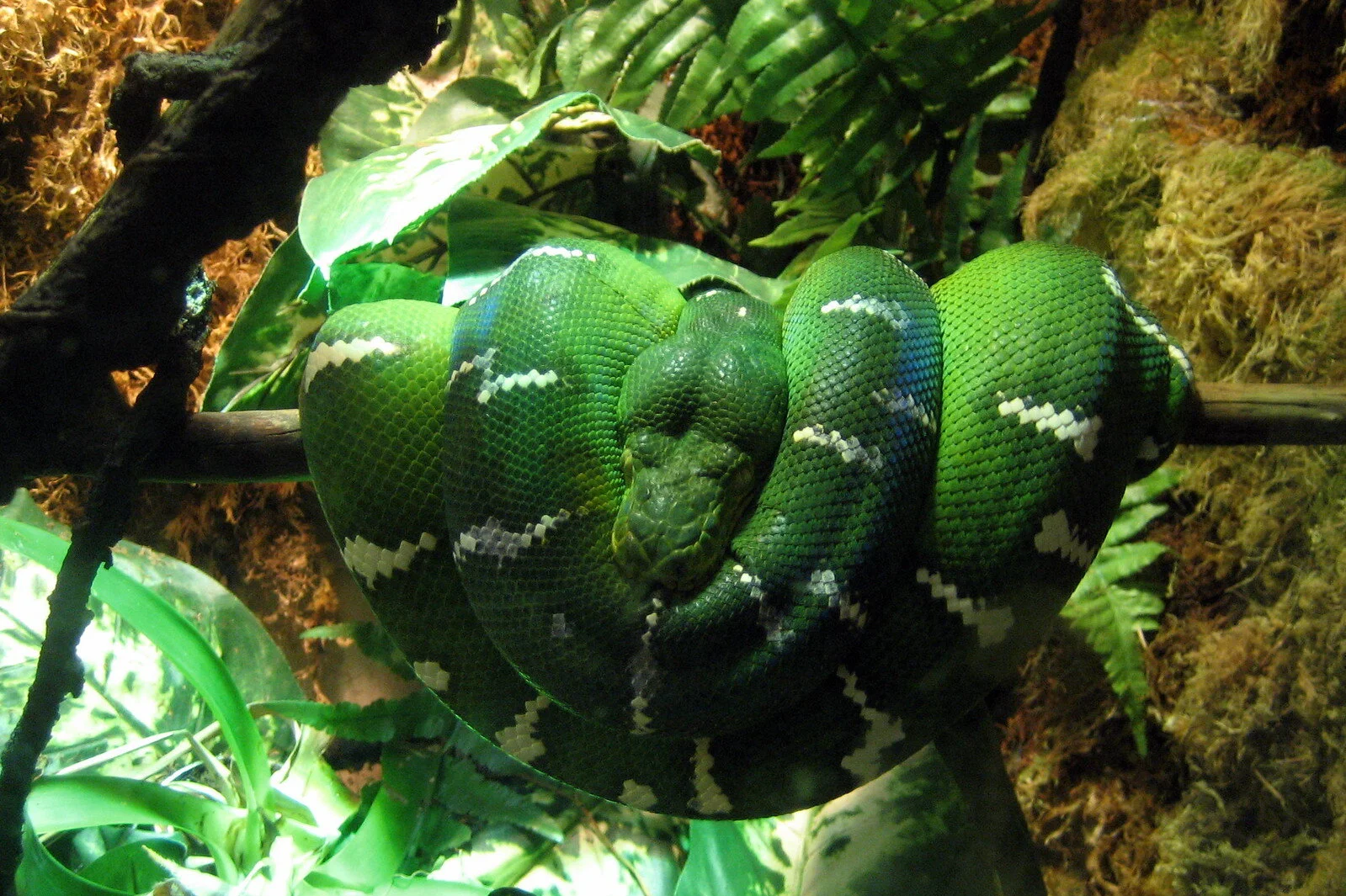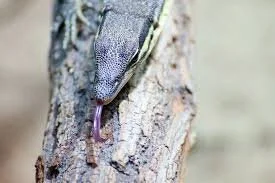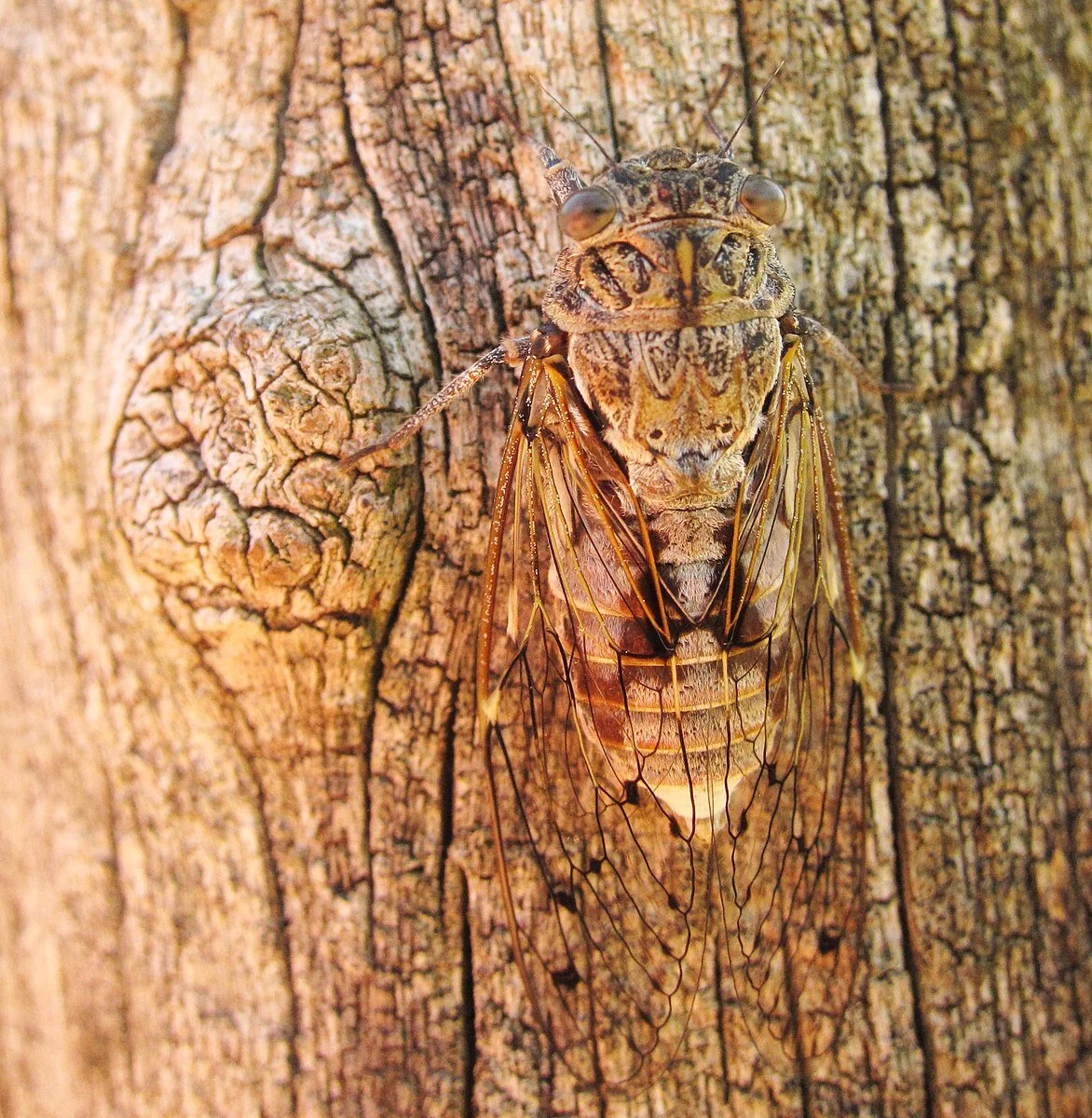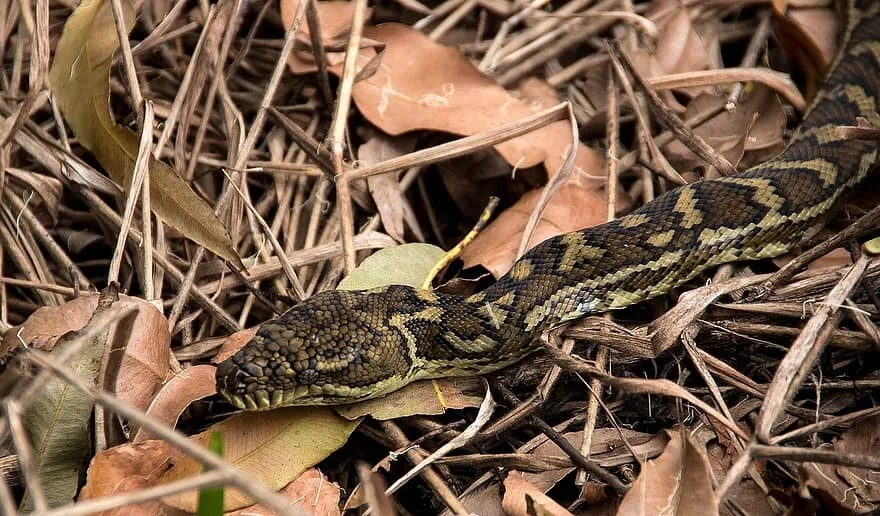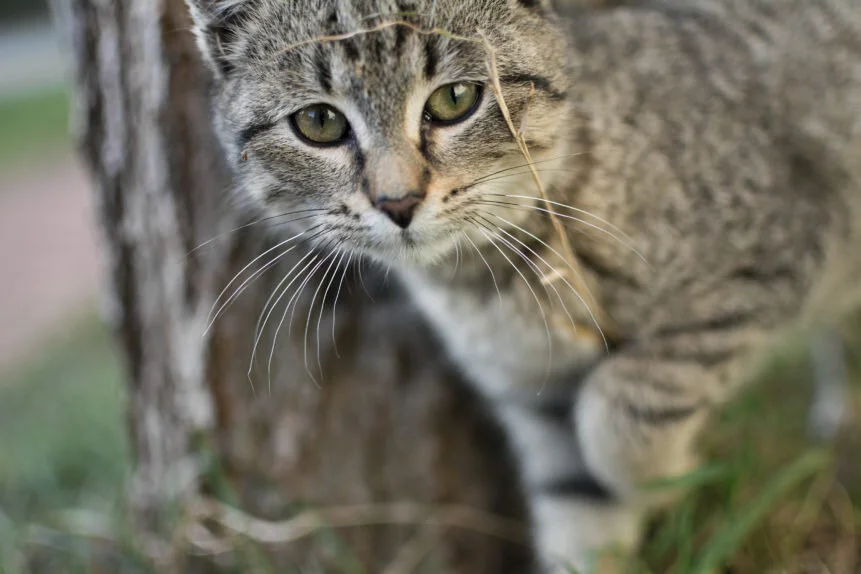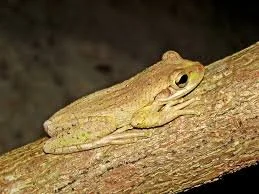
The many ways that camouflage works
When animals camouflage themselves, they degrade our ability to detect their presence or at least to identify what they are. Modern scientists of camouflage have identified a variety of strategies they use to hack our recognition software, from simple “background matching” to sophisticated disruptive patterning to anti-Gestalt attacks on “feature binding.”
Disruptive Coloration: Background Matching
This snake is disrupting our ability even to detect it. By matching its visual background, it makes it hard for us even to notice that we are really looking at two objects (a branch and a snake) rather than one.
Background Matching: Internal Disruption
This cat is shows a set of colors well matched to its background. They do little to prevent us from scrying the outline of the cat’s body against the ground, but they present a wide enough variety of shades and textures to hide the fact that its body is really a single surface. That distracts our attention from the outline of the cat’s body and it successfully fades into the background.
Countershading
This chameleon is “counter-shaded”: its belly is colored lighter than its back, so it seems not to be in shadow. Without the tell-tale shadow, it is harder for casual observers to recognize they they are looking at a a three-dimensional object.
Background Matching: Color and Texture
In a great example of pure background matching, the snake matches this tree so well in both color and texture that we can scarcely distinguish its body as a separate surface, even from a short distance. Only the snake’s tongue breaks the illusion.
Background Matching with Internal Disruption
This cigale already matches the background color well, but it adds a second strategy: internal disruption. With the thick brown lines on its back, it distracts attention from the much subtler outline of its body against the tree.
Internal Disruption: False Edges
This python’s tan and brown colors do not match its background very closely, but it sports “false edges” that slow our ability to see its body as a continuous surface. Normally, we intuit that we are looking at a continuous surface because we see it as an area of consistent coloration separated from its background by an edge. But since the python’s body confronts us with irregular tan and brown patches, separated by black “edges,” its body fades into insignificance against the chaos of background shapes and shadows. We fail to interpret it correctly as one discrete snake shape.
Background Matching with Internal False Edges
This insect not only matches its background color but also is covered in dark stripes, some of which come from its own coloration and others from the shadows cast on its body by its legs. With these dark stripes, it presents our eyes with “false edges” that prevent our seeing its body as one continuous surface. Instead, we think we are seeing the edges and shadows of several discrete objects like pieces of rock and dry vegetation.
Eyes: The Weak Point in Camouflage
This cat would match its background well if only we couldn’t see its eyes. Whenever we spot a pair of eye-like circles, we are alerted to scrutinize that area extra closely for other nearby features (like a nose or facial shadows) that belong together and comprise a face.
This process of noticing tell-tale clues that “go together” and identifying them as belonging to a face or other discrete object is called “feature binding.”
Eyes and Feature Binding
Eyes are the weak point in many animals’ camouflage. This tree frog matches its home wonderfully in both color and texture. But when we spot a round, black eye, we scrutinize its surroundings and find tell-tale features like the outlines of its head, back, and feet that give it away.
Obstructing Feature Binding
Even when an animal cannot help but be detected, it can slow our ability to identify it. Immediately we can spot something against the green background, but we are slow to figure out what it might be. A randomly shaped patch of ground, a mud bank (like the one on the right), or … something with an eye? After noticing the continuous and almost uniform dark oval of the eye, we re-evaluate the contours of the larger brown region and the brown-and-green spotted regions on its right and left and conclude with horror that we are looking at the head of a crocodile still partially hidden by greenery.
We need much longer to “feature bind” the crocodile because we have no useful features to recognize other than a single eye.
Eye Stripe: A Way to Block Feature Binding
Because eyes attract notice, some animals disrupt recognition of their eyes with a dark “eye stripe.” Instead of a tell-tale dark orb, their adversaries might notice only a dark linear shape amid a chaotic background and interpret it as one more random shadow.
Obscuring Features
This man slows feature binding simply and effectively with an eye stripe and a second stroke that distracts from the distinctive lines of the human nose and mouth. By denying us easy recognition of those features, he takes away the chief elements by which we recognize the presence of a human face. As in other camouflage strategies that thwart feature finding, he cannot prevent us from detecting him, but he makes it harder and slower to identify him.
